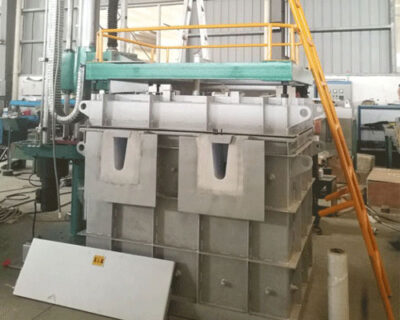Molten aluminum is extremely reactive, so when it comes in contact with moist air or wet tools, the water decomposes to release hydrogen in the melt. Excessive quantities of this dissolved gas have a well-documented detrimental effect on the mechanical properties of the final aluminum castings. What is also well known to anyone making castings is that dissolved gas has an overriding effect on the distribution and amount of porosity and shrinkage. Dissolved hydrogen levels must be controlled to minimize scrap. To control gas in aluminum, metal casters must adopt aluminum degassing methods.
1. Prevent and minimize introduction of hydrogen in the melt.
2. Measure and remove the hydrogen prior to pouring.
Aluminum Degassing Method
The ability to degas molten aluminum is generally accomplished by using a purge gas, typically introduced into the melt by a rotary degassing unit. This degassing process is limited by thermodynamic laws; when purge gas bubbles are introduced to the melt, they collect hydrogen as they float toward the surface. The best possible situation is these hydrogen-saturated bubbles leave the melt and reduce hydrogen levels. In this case, the process efficiency is 100% from the thermodynamic point of view. But as the gas content in the melt drops, so does the equilibrium pressure of hydrogen in the bubbles, so the amount of purge gas required to remove the remaining hydrogen must increase. AdTech online degassing unit is helpful for gas removal, it is stalled between the smelting furnace and casting machine.

Degassing is usually accomplished in one of three areas of the metal casting facility:
1. In the transfer ladle, used to convey metal between melting and holding furnaces.
2. In crucible furnaces, usually just before the molten aluminum is cast.
3. In an in-line system, when the metal is conveyed to holding furnaces through a launder.
Gas Measurement
There are two primary methods of gas analysis, sampling techniques and in situ methods. Sampling techniques may be further divided into two classes. In the first, a liquid sample is withdrawn and introduced directly into the measuring instrument before solidification takes place. In the second, a sample of liquid is poured into a specially designed mold and the solid sample is analyzed.

